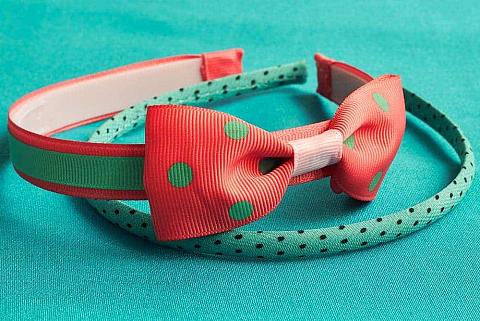Learn everything you need to know about the boater hat... history, what it is, other names for it, alternatives and more. Pictures included.

The Boater Hat
Fashion is an ever adapting entity, and there are some styles that have been left behind, only to be admired in old history books and fashion magazines. Tucked away with fascinators, elbow length gloves, and suspenders; you may find the boater hat in an old trunk of vintage treasures.
The boater hat goes by several names, and you may have heard it under the pseudonym of straw boater, basher, skimmer hat, English Panama hat, cady, katie, canotier, somer, sennit hat, or can can hat.
Read on and you’ll discover the history of the boater hat, why they’ve earned that name, how they are made, how they were worn traditionally, and how they have adapted to modernity.
Where do boater hats come from?
Style begets style, and the style of the boater hat can be linked back to the canter straw hats worn by gondoliers in canal lined cities like Venice.
Gondoliers are the operators of gondolas, which are very light, flat bottomed boats used to navigate the shallow canals of Venice. Gondoliers could be identified and flagged down because of their characteristic and distinguishable hats.
The main difference between a straw canter hat and a boater hat, is that the classic gondolier hat was decorated with a longer ribbon that fell down the back of the hat, whereas the boater hat has a trimmed hat band that only encircles the hat’s crown.
Why is it called a boater hat?
Now that you know the story of how the boater hat came to be, it isn’t too hard to guess why it received this name! Inspiration came from the gondolier operator’s hats, though since the style extends beyond the Venetian canals, hence replacing the specific term, gondola, to a more broad term, like boater!
What do boater hats look like?
The boater hat is a semi formal summer sun hat, more traditionally worn by men, though women seem to have taken over the style in modern times.
Traditionally the boater hat was made from stiff woven sennit straw. The hat has both a stiff flat crown, and a stiff flat brim. These hats are rounded with a slight ovular shape.
To decorate this sennit hat, either a solid or striped grosgrain ribbon would be tied around the circumference of the crown. Hat size may vary, though they will always have a wide brim and hat band.
What are the different types of boater hats?
Straw Boater Hat
The straw boater hat is the most common and the most traditional style of boater hat. The crown and brim are both made of straw (traditionally sennit straw) and has a hatband ribbon wrapped around the crown.
Panama Boater Hat
The Panama straw boater hat is very similar in style to the straw boater hat, the only difference being that material used for the brim. The Panama version is made from palm tree leaves! It is also sometimes decorated with small bows on the sides, or a flower tucked into the hat band.
Wool Boater Hat
The same shape and style is found in both the straw and wool boater hat, the only difference between the two being that the wool boater is (quite obviously) made from wool! These tend to have a tighter fit than straw hats.
This is more of a formal, winter hat. It possesses the same flat brim, though it is often dyed and decorated with a ribbon tie around the crown. This also allowed for more color creativity.
Fringe Boater Hat
The fringe boater hat is completely identical to the straw boater hat in shape, style, and material used. The only difference is that the fringe boater has an unfinished edge, meaning that the straw is roughly cut around the rim of the brim, creating a fringe appearance!
When were boater hats popular?
The boater hat became a very popular statement piece in men’s wardrobes in the late 19th century. Photographic records show that wider brim boaters were worn before WW1, whereas more narrow brim boaters were worn after WW1.
Boater hats could be an every day hat, or a hat to wear sailing, to the horse races, or to a garden party. Their main purpose was to keep a head protected from the sun, and to look fashionable too!
In the early 20th century, Coco Chanel took a liking to boater hats and adapted them into a more fashion forward option. What was once only worn by men, was now a fashion statement piece for women as well.
Where can you still see boater hats being worn?
It is not a common sight to see a classic boater hat walking down the street, though they are still commonly worn as part of the school uniform in boys’ schools in the United Kingdom, New Zealand, Australia, and South Africa.
Otherwise, boater hats can be occasionally seen at sailing events or towing events, or if they are being used for costuming in theatre and musical performances, like that of a barbershop quartet.
Though the exact trend seems to have faded away, the shape is continuously adapted. It is not uncommon to see a boater inspired hat shape worn by women in modernity, made from felt or wool or any other material.
Though a felt hat may not be as easily recognized than the traditional fabric, any woman would be proud to learn that her fashion accessory has taken inspiration from the classic boater shape trend that occurred many decades ago!
What is Straw Hat Day?
Get ready for some romance! Now that we know that boater hats are a warm weather hat, this is an indicator of how style changes by season.
Back in the early 19th century, when it was considered odd for a man to not wear a hat outside, it was a significant event for this every day garb to change. Men would have their winter hats, and they would have their summer hats.
In eastern Europe and the United States when the weather began to warm, men would switch from wool hats to straw hats. This was a sign that winter had finished for the year, and that summer was on its way.
The switching of hats became quite an event, and a celebration started to help welcome the coming of a new season. The exact date will obviously vary, as certain parts of the world receive summer earlier than others. In Philadelphia it was on May 15th, whereas in Pennsylvania is was always the second Saturday of May.




